 Rotary Laser Level Product Applications |
|||||
| >> Rotary Laser Guide | |||||
|
Johnson Level & Tool Today, the three most common types of laser levels are Rotary Laser Levels, Line Laser Levels (or Line Generators) and Dot Laser Levels (or Multi-Point Lasers). This article focuses on Rotary Laser Levels and practical applications of use indoors for rough and finished construction projects and outdoors for grading and other leveling construction on the job site.
An easy example to understand how a Rotary Laser Level can be used is to imagine you want to install a chair rail around a room. The hard part about this job is making sure the chair rail is level and the same height from the floor on all four sides of the room. To do this job right, you will need to make several measurements and marks on the walls of both height and level with a tape measure and traditional bubble level (or spirit level). With a Rotary Laser Level, however, you can place the Rotary Laser Level in the center of room on a Tripod. When you turn on the Rotary Laser Level, a beam of light circles the room at the same height. You can then adjust the tripod to get the exact height you need, for chair rails this is typically 1/3 up the wall, or 32�- 36� for an 8� ceiling. With the laser beam of light continually circling the room, you can now effortless install your chair rail around the room with confidence it is perfect.
As you stand in your house, look around. Anywhere you find surfaces that need to be level, you could use a Rotary Laser Level to help you with the job. Of course, in many project applications, a traditional level will work, but what you may find is often, using a Rotary Laser Level will turn a two-person job into one-person job and just make the job go a lot faster. And although Johnson bubble levels (or spirit levels) are extremely accurate, their accuracy depends on the person holding the level. With most Rotary Laser Levels, the leveling is done automatically by the laser level, so you are guaranteed accuracy as long as your Rotary Laser Level is calibrated correctly. Rotary Laser Level Accessories The most common accessories used with Rotary Laser Levels indoors are tripods (for elevation), ceiling mounts (to hold the laser on a perimeter such as installation of an acoustical ceiling) and a target (which has reflective tape to help you see the laser more easily). Outdoors, common accessories are tripods, detectors and graderods. Rotary Laser Level Outdoor Applications
Let�s take a simple outdoor application for a Rotary Laser Level first. Instead of a chair rail around a room, you are putting in deck in your backyard. The Rotary Laser Level can be used to the side of the area for the deck and set up on a tripod, can be used with a Detector to establish the height of the deck�s floor. Once completed, the tripod can be elevated to again be used with a Detector to build a level wall or rail around the deck.
When working outside with a Rotary Laser Level, there are typically three accessories you will need: a Laser Detector or receiver that detects the laser beam when the human eye cannot; a tripod to hold the laser; and for grading projects, a grade rod to measure changes in elevation. The color of the beam for a laser level to be used exclusively outside should only be red. Although Johnson�s �GreenBrite� (green beam lasers) are 400% brighter than red, since the beams cannot be seen in sunlight anyway, there is no need to spend the extra money for this feature. If your Rotary Laser Level will be used both indoors and outdoors, of course Green will work. Features With your Rotary Laser Level, you may have some additional features beyond just a 360-degree beam of light at a constant speed. First, some Rotary Laser Levels have a variable speed control. At slower speeds, the beam of light is more visible, while at higher speeds, there is more of a �chalk-line� effect, meaning you will see one line all around the room. Second, some Rotary Laser Levels have a �scan mode� which allows you to change the 360-degree rotation to a 30-degree or 60-degree area. By narrowing the angle of the laser, the laser beam becomes more concentrated and more visible to the human eye. If you are working both outside and inside, the color of the beam, red or green, does not matter. However, if you have these additional features, a slower rotation speed makes it more visible indoors while a faster rotation speed makes the laser level more detectable. �2010 Johnson Level & Tool Mfg. Co.,
Inc.
|
|||||
|
|||||
|
|
|||||


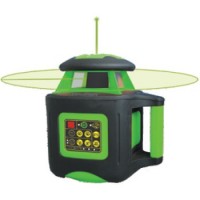 Interior
Applications for Rotary Laser Levels
Interior
Applications for Rotary Laser Levels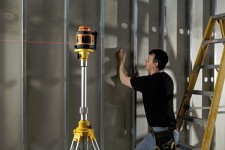
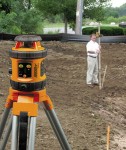
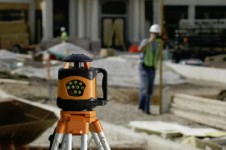
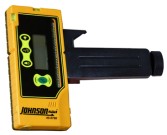


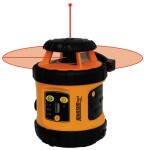


 Add
Add 